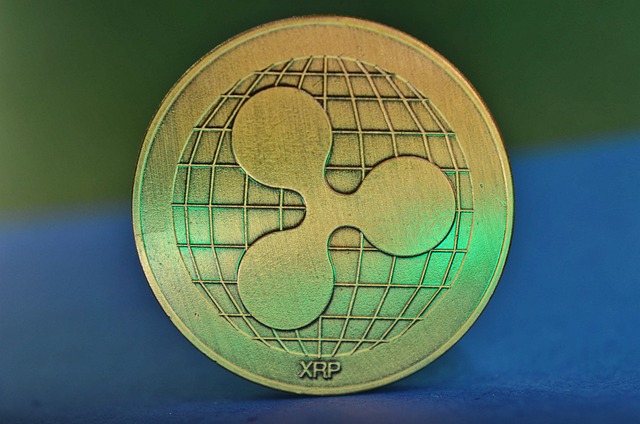Used Equipment Financing
How to Choose the Right Financing Option
Choosing the right financing option is crucial for maximizing your financial potential. **First, assess your financial situation comprehensively.** Understand your current income, expenses, and liabilities. This thorough assessment will give you a clearer picture of how much financing you genuinely need and what you can afford to repay.
**Identify your financing goals.** Are you looking to invest in a property, finance a business venture, or simply fund a large purchase? Each scenario requires distinct financing pathways—loans, credit lines, or investors may serve different purposes.
**Consider the types of financing available.** Traditional bank loans often come with lower interest rates but may have strict approval criteria. Credit cards offer flexible financing, but interest rates can escalate quickly. Peer-to-peer lending platforms provide alternative routes with varying terms. Understanding the pros and cons of each option is essential.
**Evaluate the costs involved.** Beyond interest rates, assess origination fees, prepayment penalties, and any hidden costs. **Calculating the total cost of borrowing will help you make an economic choice.**
**Check your credit score.** A higher score may qualify you for superior rates, while a lower score can limit your options or increase costs. If your score isn’t where you want it to be, consider taking time to improve it before applying for financing.
**Examine the repayment terms.** Flexibility in repayment can provide breathing room during tight months, but longer terms often lead to more interest paid over time. Balance your need for lower payments today against the overall cost of financing.
Ultimately, **consult with financial advisors or use financial calculators** to run different scenarios. This approach allows you to visualize the impact of various financing options in your specific context. Making the right choice in financing can significantly affect your financial trajectory and open doors to future opportunities.
Future Outlook for Used Equipment Financing
The trend towards increased used equipment financing is not just likely but is already here. Economic uncertainty pushes businesses to seek cost-effective solutions, amplifying the appeal of used equipment. As new equipment prices rise, many companies are forced to reconsider their financing options. A strategic focus on used equipment not only enhances cash flow but also allows businesses to acquire the assets they need at a fraction of the new cost.
The digital transformation in financing channels also plays a critical role. Online platforms and fintech innovations are making used equipment financing more accessible and streamlined. These technologies allow for quicker approvals and extensive options, empowering businesses of all sizes to act on opportunities without endless delays. For lenders, this translates into an opportunity to cater to a larger consumer base, thereby increasing their market share.
In addition, the sustainability movement adds another layer of complexity. Renewed focus on sustainability drives companies to consider used equipment as a viable option to reduce waste and promote recycling. This will foster an increase in the demand for used assets, making it imperative for financial institutions to adapt their offerings to cater to this eco-conscious trend.
We can also expect to see a rise in alternative financing structures, such as lease-to-own options or flexible payment plans. These structures are particularly appealing as they align with the financial needs of businesses that are reluctant to lock up large sums in capital. With the economy changing daily, such flexible options facilitate quick adjustments to financing needs without the burden of long-term commitments.
Looking ahead, the increasing integration of data analytics into financing decisions will be a game-changer. Enhanced data offerings will allow lenders to more accurately assess risk and tailor financing packages accordingly, leading to better fit for borrowers. As we adapt to these financial innovations, businesses can expect a more refined approach to used equipment financing, tailored by technology and driven by market demands.
Advantages over Purchasing New Equipment
Many business owners overlook the benefits of acquiring used equipment instead of new. Here’s why I prefer buying used.
- Significant Cost Savings: Purchasing used equipment often allows us to save a substantial amount compared to buying new, which means more cash flow for other essential business expenses.
- Immediate Availability: Used equipment can be ready for use almost immediately, avoiding the long wait times associated with ordering new devices.
- Depreciation Benefits: Used equipment has already undergone significant depreciation, which can lead to lower insurance costs and impacts taxes favorably.
- Established Proven Performance: We can evaluate the equipment’s performance based on previous use, ensuring we choose options that have stood the test of time in similar operations.
- Access to Higher Quality Brands: With a budget for used equipment, I can often invest in higher-end brands that would stretch my finances if purchased new.
- Environmental Impact: Opting for used equipment contributes to sustainability efforts, minimizing waste and the demand for new manufacturing.
Benefits of Financing Used Equipment
Financing used equipment can significantly enhance cash flow, enabling businesses to allocate funds to other critical areas. For instance, rather than expending a large sum on new machinery that will depreciate, financing allows for manageable monthly payments, which greatly aids in budgeting. Additionally, used equipment often comes at a fraction of the cost of new models. This price differential means substantial savings while still accessing high-quality machinery that can meet your operational needs. Buying used instead of new equipment can also reduce the immediate financial burden. Lower upfront costs alleviate the pressure on cash reserves and provide financial flexibility. Moreover, as the equipment is already depreciated, financing terms can be more favorable compared to new equipment.
Another compelling advantage is that many used items come with a proven track record. Purchasing used equipment often means you’re selecting from tried-and-true models that have demonstrated reliability in the field, minimizing the risk associated with new, untested technology. You can assess past performance and user reviews to further guide your choice.
Financing also opens doors to a wider array of equipment options. If your budget for outright purchase is limited, financing used equipment expands your choices, allowing you to get the machinery that aligns with your business requirements. This access can improve efficiency and performance without breaking the bank.
Lastly, there are potential tax benefits. Depending on your location and local tax laws, financing equipment might allow you to deduct interest payments on your taxes or qualify for accelerated depreciation benefits. This not only sweetens the deal but can also lighten your overall tax burden.
Understanding Financial Terms in Equipment Financing
Equipment financing is a crucial avenue for many businesses, yet it encompasses various financial terms that can be confusing. I find that understanding these terms is essential to unlocking your financial potential.
Principal refers to the original sum borrowed or the amount financed for purchasing the equipment. This is the foundation of your loan, and knowing this helps in calculating interest costs. The interest rate is the percentage of the principal charged by the lender for borrowing money. A lower interest rate can make a significant difference in total repayments.
The term amortization comes into play when discussing how the loan is paid off over time. This process breaks down each payment into principal and interest, allowing me to see how my debt reduces over the loan period. Understanding this helps predict future cash flows.
Another key term is down payment, which is the initial amount put towards the equipment’s purchase. A lower down payment might mean higher monthly payments, so I must evaluate my financial situation carefully. Following the down payment is the lease vs. purchase dilemma. A lease typically requires lower upfront costs and monthly payments, while purchasing leads to eventual ownership of the asset.
Then we have collateral, which refers to the equipment itself that secures the financing. If I default on payments, the lender can seize the equipment. Additionally, understanding prepayment penalties is vital because some loans charge a fee if I choose to pay them off early, which could affect my decision-making process.
Lastly, creditworthiness is crucial in determining the terms of my financing. Lenders assess my credit score, which impacts the interest rate and loan options available to me. High credit scores generally lead to better terms.
Grasping these financial terms in equipment financing allows me to assess options more accurately and leverage my decisions effectively. Knowledge is power, especially in finance, as it lets me make choices that align with my business objectives.
Considerations for businesses on a budget
Key factors to keep in mind for effective financial management when resources are limited.
- Prioritize essential expenses. I focus on core needs to avoid overspending on non-essential items.
- Utilize free tools and resources. There’s no need to pay for software when there are effective free options available.
- Negotiate with suppliers. I always ask for discounts or better terms; it often results in savings I didn’t anticipate.
- Track every dollar. Keeping a close eye on expenditures helps identify waste and areas for potential savings.
- Consider remote work options. Reducing office space can significantly lower overhead costs, especially in the long term.
- Invest in employee training. Well-trained staff can enhance productivity and maximize return on investment.
- Embrace social media for marketing. It’s a cost-effective way to reach audiences without breaking the bank.
Capital equipment, including software, that will be used systemwide, or between and among U. T. institutions and System Administration, is eligible for RFS …
FSA loans can be used to purchase land, livestock, equipment, feed, seed, and supplies. Loans can also be used to construct buildings or make farm improvements.
Chattel loans are used to purchase equipment or livestock. Farm development loans are used to purchase real property and construct non-residential improvements …
Agriculture Loans for Alaska Farmers | Cooperative Extension Service
The Importance of Credit Score in Financing
A credit score is a critical indicator of financial trustworthiness. Lenders use it to assess the risk of lending money or extending credit. A higher credit score can translate into better loan terms, including lower interest rates and more favorable repayment options. Essentially, your credit score can make or break your financial opportunities. Individuals with poor credit scores often face challenges securing loans, higher insurance premiums, and even difficulties in renting homes. This means that being proactive about managing your credit score can have far-reaching effects on your financial life. Understanding how credit scores are calculated is crucial. Scores range from 300 to 850, with higher scores indicating lower risk. Factors influencing credit scores include payment history, credit utilization, length of credit history, types of credit accounts, and recent inquiries. Each factor plays a role in how lenders perceive you. Even small changes in your credit score can influence your borrowing capabilities. For instance, if you manage to increase your score from 650 to 700, you may qualify for a significantly lower interest rate on a mortgage or personal loan. This can save you thousands of dollars over the life of the loan. Another consideration is that your credit score doesn’t just affect loans; it can also impact job applications and rental agreements. Some employers check credit scores as part of their hiring process. Additionally, landlords may evaluate your credit score to determine your suitability as a tenant. The good news is that your credit score is not set in stone. Regular monitoring, timely payments, and reducing outstanding debt are effective strategies for improving your score. Educating yourself about credit reporting agencies and ensuring accurate reporting is equally important. Mistakes on your credit report can lead to inaccurate scores and unintended consequences. In summary, your credit score is a powerful tool that can unlock various financial opportunities. Understanding its importance in financing decisions will empower you to take charge of your financial future.
Common Mistakes to Avoid
One of the biggest mistakes I’ve seen is failing to budget effectively. A budget is crucial for tracking your income and expenses. Without it, you’ll likely overspend and miss savings opportunities. Start by categorizing your expenses and setting a clear limit for each category.
Another common pitfall is neglecting to build an emergency fund. Life is unpredictable, and unexpected expenses can derail your financial plans. Aim to save at least three to six months’ worth of living expenses in a high-yield savings account.
Many people also make the mistake of ignoring debt. High-interest debt can cripple your financial potential. Prioritize paying off debts with high interest rates to free up more cash for investing or saving.
Investing without research or understanding is another blunder I frequently witness. Familiarize yourself with investment options, associated risks, and market trends. Educate yourself continuously to avoid costly errors.
Timing the market instead of focusing on time in the market can be detrimental. Trying to predict the perfect time to invest often leads to missed opportunities. Instead, consider a long-term approach to investing to ride out market volatility.
Overlooking retirement savings is an egregious mistake I’ve encountered repeatedly. Start contributing to a retirement account as early as possible, and take advantage of employer matches. This is free money that can significantly boost your savings over the years.
Lastly, many individuals fail to regularly review their financial goals and performance. Life circumstances change, and so should your financial strategies. Schedule regular check-ins to adjust your plans accordingly.
AgDirect® is powered by Farm Credit – committed to serving agriculture and built from the ground up to finance ag equipment.
We offer several options, including leasing and loans for used equipment, each structured to provide flexibility and affordability to our small business …
Would you prefer the European site? We think you might, as BakerCorp is now United Rentals throughout Europe. To learn more about our products or career …
New or Used Equipment Financing up to $250000 at better rates without hassle. Easy qualification, fast funding to small businesses like yours since 1989.
Types of Used Equipment Financing Options
Financing used equipment can be a strategic decision that maximizes your cash flow while minimizing upfront costs. There are several financing options available, each with its unique advantages and considerations.
1. **Equipment Loans**: These loans are specifically designed for purchasing used equipment. The equipment itself usually serves as collateral, meaning you can secure favorable interest rates. Generally, you’ll pay off the loan over a fixed term, enabling predictable budgeting.
2. **Leasing**: Leasing allows you to use the equipment without purchasing it outright. You make monthly lease payments for a specified term, and at the end of the lease, you may have options to purchase, renew, or return the equipment. This option is excellent for businesses that need the latest technology but want to avoid large capital expenditures.
3. **Dealership Financing**: Many equipment dealers offer financing options directly. This could include offers with zero down payment or low-interest rates. Dealership financing can be convenient, but always compare terms with other lenders to ensure you’re getting the best deal.
4. **Bank and Credit Union Loans**: Traditional banks and credit unions often provide competitive rates, especially if you already have a relationship with them. These institutions might require stronger financials but can offer lower rates over the long term.
5. **Alternative Financing Solutions**: Companies are increasingly turning to online lenders and alternative finance options. These can provide fast access to funds with less rigid requirements than traditional banks. However, keep an eye out for potentially higher fees and interest rates.
6. **Vendor Financing**: Some suppliers may offer financing options directly for purchasing used equipment. They may provide flexible payment terms that make acquiring equipment easier. This can be a great way to secure equipment support directly from the manufacturer or supplier.
Understanding these financing options for used equipment could empower you to select the best fit for your business needs. Each option serves to either preserve capital or provide flexibility in managing cash flow, which is crucial for financial growth.
Steps to Secure Used Equipment Financing
Securing financing for used equipment requires a strategic approach that can save you both time and money. First, assess your specific needs. Understand what type of equipment you require and the condition that would be acceptable. This clarity will help you narrow down your options and negotiate better terms.
Next, research potential lenders. Look for financial institutions or companies that specialize in equipment financing. Pay attention to their terms, interest rates, and any applicable fees. Compare multiple lenders to ensure you’re getting the best deal.
Gather the necessary documentation. Lenders often require financial statements, tax returns, and proof of business ownership. Prepare these documents meticulously, as they’ll significantly impact your financing application. A well-prepared application can expedite the approval process.
Consider your credit history as well. A strong credit score will enhance your chances of getting favorable financing. If your credit score needs improvement, consider taking steps to boost it before applying for financing. Your creditworthiness plays a critical role in the financing terms you will receive.
Analyze the potential return on investment for the equipment. How will it fit into your business operations? Understanding the impact on your bottom line can empower you to negotiate better financing terms. Lenders are more likely to approve financing if they see the equipment as an asset that will generate income.
Once you’ve selected a lender, review the financing terms thoroughly. Look beyond the monthly payment to understand the total cost of the loan, including interest and fees. Being aware of the fine print can prevent financial strain later.
Finally, be prepared to act quickly. The market for used equipment is competitive, and the ideal piece may not be available for long. Having your financing lined up in advance gives you a distinct advantage. When you find the right equipment, you’ll be ready to negotiate and finalize the purchase efficiently.
Latest Market Trends in Equipment Financing
Equipment financing is currently experiencing significant shifts driven by economic conditions, technological advancements, and evolving business needs. With rising interest rates and inflation concerns, many businesses are reevaluating their capital allocation strategies. Equipment financing provides a critical solution, allowing companies to preserve cash flow while acquiring essential assets. This trend is particularly prominent in sectors like construction, manufacturing, and healthcare, where equipment is vital. Furthermore, the increased focus on sustainability has prompted many businesses to invest in energy-efficient and eco-friendly equipment. Leases and loans tailored to green technology are gaining popularity, reflecting a shift toward responsibly sourced and manufactured equipment. Lenders are recognizing this movement and adjusting their offerings to include favorable terms for environmentally-friendly equipment.
Another notable trend is the rise of digital solutions in the equipment financing space. The advent of online lending platforms is accelerating the application process, making it easier for businesses to secure financing. With more transparency in the lending process, companies can now access a wider array of options and make faster decisions. The integration of technology into this sector is enhancing customer experiences, allowing businesses to efficiently manage their financing through digital tools.
From my observations, the demand for used equipment financing is increasing as companies look to optimize costs. As new equipment prices soar, more businesses are turning to the secondary market, creating a healthy ecosystem for both lenders and borrowers. Innovative financing solutions, including deferred payments and flexible lease structures, are emerging to accommodate this demand.
In summary, equipment financing is evolving to meet current market demands. With economic pressures pushing companies towards smarter investment choices, the move towards flexible solutions, sustainable practices, and technology-driven services is creating a vibrant financing environment.
Key factors influencing financing decisions
Understanding these key factors can significantly impact your financing choices.
- Personal financial goals: My ambitions shape my financing decisions. Whether I’m saving for a vacation or planning for retirement, these goals directly impact my investment choices.
- Market conditions: I keep a close eye on the economic landscape. Interest rates, inflation, and market trends influence the timing and type of financing I pursue.
- Risk tolerance: My comfort level with risk plays a crucial role. Depending on how much I can afford to lose, I adjust my investment strategies accordingly.
- Time horizon: The duration I plan to invest directly impacts my decisions. Short-term goals might prompt me to choose safer, more liquid investments, while long-term objectives can allow for more aggressive strategies.
- Creditworthiness: My credit rating affects the financing options available to me. A higher credit score opens doors to better loan terms and lower interest rates, which I always factor into my decisions.
Understanding Used Equipment Financing
Financing used equipment can be a strategic move for businesses looking to expand without the large upfront costs associated with new machinery. Many entrepreneurs overlook the potential savings of purchasing used equipment, often focusing instead on the assurance that comes with brand new items. However, savvy business owners know that the right used equipment can yield high returns on investment.
Understanding the types of financing options available is crucial. Many lenders offer specific programs for used equipment, which can include loans or leasing options. Loans typically involve paying off the equipment cost over time with interest, while leases allow you to use the equipment without a hefty upfront payment. Each option has its benefits, depending on your business’s cash flow and long-term plans.
Additionally, creditworthiness plays a significant role in securing favorable financing terms. In my experience, maintaining a good credit score will generally provide you with a variety of financing options and better interest rates. Lenders often gauge the risk of lending to businesses based on their credit history, which might impact your financing costs.
It’s also essential to assess the condition and relevance of the used equipment you’re considering. Investing in machinery that fits your operations and has a good maintenance history can save you from unexpected repair costs and downtime. To that end, it’s advisable to get a thorough inspection conducted by a knowledgeable technician before finalizing your purchase.
Another critical factor is understanding the market value of the used equipment you wish to finance. Researching comparable sales can provide leverage when negotiating prices with sellers or lenders. This knowledge can effectively reduce costs and ensure you’re making a wise investment.
Financing used equipment isn’t about cutting corners; it’s about making strategic financial choices that align with your business goals. The right approach to financing can unlock greater operational efficiency and profitability.
Real-Life Case Studies and Success Stories
I transformed my financial situation by adopting a strategic approach to budgeting and savings. For years, I operated under the mindset of just getting by. After a wake-up call from an unexpected expense, I decided to track my spending meticulously. I started using a simple app to categorize every purchase, which led me to identify unnecessary expenses like daily coffee runs and impulse buys. Eliminating these habits allowed me to save an extra $300 a month. This newfound discipline made budgeting not just an obligation but a habit I embraced.
Then there was Mark, a friend who turned his modest savings into a significant investment portfolio by consistently contributing to low-cost index funds. He researched the market trends and focused on long-term gains. Over five years, Mark managed to grow his investment substantially, demonstrating the power of patience and informed investing. He espoused the idea that investing doesn’t require extraordinary insight but rather a commitment to learning and gradual investment.
Another inspiring example is Lisa, a working mother who managed to pay off her student loans ahead of schedule. She took on a side gig in freelance writing. By budgeting her income from this side hustle and putting it directly toward her loans, Lisa was debt-free in just two years. This case illustrates the impact of creative thinking and hard work.
These stories resonate with me because they highlight that unlocking financial potential isn’t about jumping into complex investments immediately. Instead, it’s often about basic principles: tracking spending, saving diligently, and being proactive about debts. These real-life examples remind us that financial freedom is achievable through consistent effort and strategic planning.
What is used equipment financing?
Used equipment financing refers to loans or leases specifically for purchasing pre-owned machinery or tools. It is a practical option for businesses looking to save costs while obtaining necessary assets. This type of financing helps preserve cash flow, as it often requires lower down payments compared to new equipment financing. Moreover, interest rates can be competitive, and repayment terms can be customized to meet your business’s cash flow needs. Purchasing used equipment can also provide immediate access to technology and tools that enhance productivity without the burden of a new purchase’s depreciation. Companies often turn to this option to minimize financial strain while still achieving operational goals. Keep in mind that working with a reputable financing partner is crucial, as they can provide insights into the best options available based on your business’s specific circumstances.
How can I improve my credit score for financing?
Pay your bills on time. This is the most crucial factor impacting your credit score. Set reminders or automate payments if necessary. Reduce your credit utilization. Aim to keep your credit card balances below 30% of your credit limit. If you can pay them off in full, do it. Check your credit report regularly. Identify errors, discrepancies, or outdated information that could be dragging your score down. Dispute any inaccuracies you find. Limit new credit inquiries. Each time you apply for credit, it can slightly lower your score. Only apply for credit when necessary. Establish a diverse mix of credit types over time, like installment loans and revolving credit, but manage them responsibly. Lastly, consider becoming an authorized user on someone else’s credit card to benefit from their good credit behavior.
What are the typical terms for used equipment financing?
Financing terms for used equipment typically range from 24 to 60 months. The specific duration often depends on the equipment’s age, condition, and expected lifespan. Interest rates can vary significantly, generally falling between 5% to 20%, influenced by your credit score and the lender’s risk assessment. Many lenders require a down payment, usually around 10% to 20% of the equipment’s purchase price. Additionally, some may impose fees such as application or documentation fees. You can also face stipulations on usage; lenders often want assurance that the equipment will be maintained appropriately and utilized effectively. Flexible payment options might be available, allowing for seasonal adjustments based on cash flow. Understanding these terms in detail is crucial; they directly impact your budget and overall financial strategy.
Can startups access used equipment financing?
Yes, startups can definitely access used equipment financing. Many financial institutions recognize the potential of startups and are willing to provide financing options for used equipment. This is particularly beneficial for startups looking to minimize initial costs while acquiring essential tools and machinery.
Options include traditional bank loans, leasing companies, and specialized lenders focused on startups. Used equipment financing typically offers lower rates than new equipment financing. This can significantly reduce monthly payment obligations, allowing startups to allocate funds toward other critical areas of their business.
However, lenders often evaluate the startup’s creditworthiness and business plan. A solid financial history or a well-structured business strategy can enhance your chances of approval. Ultimately, maximizing your financial potential often starts with strategic equipment investments. So, whether you’re eyeing machinery or office equipment, don’t overlook used options that can still deliver robust performance.
What documentation do I need to apply?
To apply for financial products or services, you typically need to provide several key documents. Most importantly, you’ll need proof of identity, such as a government-issued photo ID or passport. It’s also essential to present proof of income, which could be in the form of pay stubs, tax returns, or bank statements. Additionally, you may need to supply your Social Security number or equivalent documentation based on your country of residence. If you’re applying for a loan or mortgage, lenders often require documentation related to assets, debts, and employment history. Always check the specific requirements of the institution you’re dealing with, as they can vary. In some cases, you may also be asked for documentation verifying your address, such as utility bills or rental agreements. Being organized and having these documents ready can streamline your application process significantly.
Are there tax benefits associated with financing used equipment?
Financing used equipment can offer significant tax advantages. Generally, the interest on loans for equipment financing is tax-deductible, which can effectively reduce your taxable income for the year. Additionally, you can utilize Section 179 of the IRS tax code, allowing you to deduct the full purchase price of qualifying equipment in the year it was financed, rather than spreading the deduction over the equipment’s useful life. This means you can possibly lower your tax bill right away, which is an attractive option for many businesses.
If leasing is the route chosen instead of purchasing outright, you could also benefit from deducting lease payments as business expenses. This method may provide more immediate cash flow benefits compared to capital expenditures. It’s crucial to consult with a tax professional to ensure these options align with your financial strategy and are fully utilized within your specific circumstances.
Buying used equipment is a game-changer for your wallet. **You can often obtain high-quality items at a fraction of the original cost.** This not only maximizes your budget but also allows you to invest your savings elsewhere. **Consider the potential returns when purchasing used machinery or technology; your financial health will benefit significantly from these choices.**
Understanding financing options is critical for effective financial planning. Knowledge of available loans, credit lines, and investment choices shapes our strategies, allowing us to optimize cash flow and reduce costs. Each option has distinct implications that can significantly affect our financial health. Deliberate selection paired with an insightful approach will enhance our financial journey.
Credit scores are crucial for obtaining favorable interest rates on loans and credit. A higher score translates to lower costs over time, allowing me to save significantly. I’ve witnessed firsthand how a stellar score made all the difference in securing a mortgage with a competitive rate, proving that prioritizing credit health pays off immensely.
Recognizing common financial blunders can significantly cut expenses and save precious time. I’ve seen firsthand how avoiding pitfalls like unnecessary fees, ignoring budgeting tools, or overlooking compound interest can lead to substantial savings. By being vigilant, I can invest smarter and protect my financial health more effectively.










